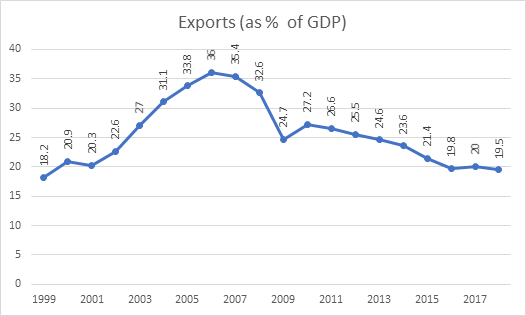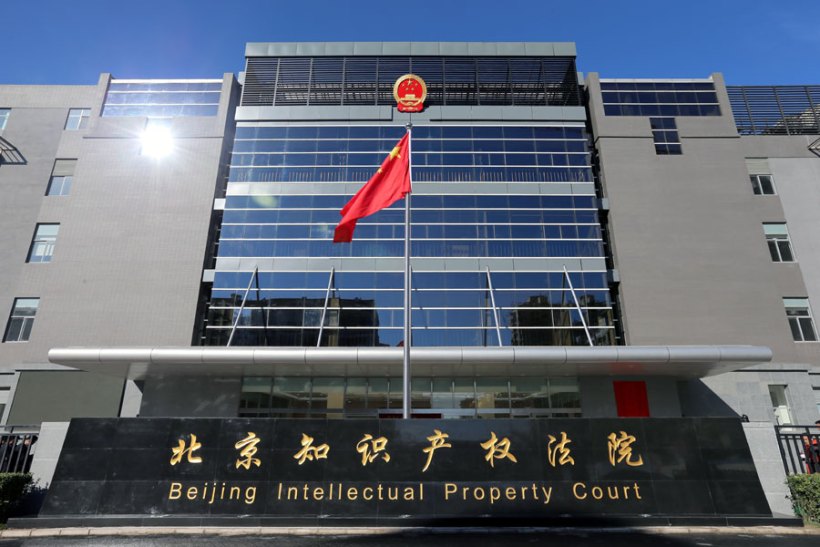Akshit Goel, Research Intern, ICS
Since the beginning of the COVID-19 pandemic, nations around the world have scurried to contain the spread of the pathogen which has left the global economy in shambles. The physical measures put in place to ‘flatten the curve’ such as travel bans, lockdowns and social distancing norms have revealed the fragility of global economy. The lockdowns have severely affected the economies at home due to loss in production as major industries and factories are shut down. Further, there is also a dent in consumer spending as households are burning through their savings with their incomes impacted. The combination of these factors spell disaster for the world economy as the International Monetary Fund (IMF) predicts the recession due to the pandemic may be worse than the 2009 global recession.
Prospects such as availability of cheap skilled labor and advancements in technology has increasingly moved the production and assembly chains of major corporations from their countries of origin to nations abroad. This trend of overseas production has left the global economy far more integrated and dependent on each other. This model of production outsourcing has been one of the driving forces that has transformed the Chinese economy into one of the manufacturing hubs of the world. China is part of some of the most important supply chains in the global economy. Availability of cheap skilled labor as well as a well-developed supply chain network alongside an integrated infrastructure which cannot be easily replicated elsewhere has helped China solidify its position as a lucrative source of cheap and steady manufacturing for many large firms around the globe. As income of individuals grew due to privatization and rapid economic growth, private household consumption also rose. This led to the creation of large domestic consumer markets in China which further incentivized manufacturers to move production here. Moreover, these supply chains fuel a major portion of the industries in South-east Asian nations such as pharmaceuticals, automobile, garments, and many more by supplying them with machinery and components which are imperative for their sustenance. The electronics industry is one of the most important industries which is dependent on the South-east Asian supply chains. Therefore, with the outbreak of COVID-19, not only is the Chinese economy affected but due to the shutdown of industries, supply chains across the globe have been disrupted.
The epicenter of the corona pandemic, Wuhan is a major manufacturing hub located in Hubei province. According to a report by Dun & Bradstreet, a business think-tank based in US, 51,000 companies have one or more direct suppliers in Wuhan, while 5 million companies have one or more tier-two suppliers in the region. This supply shock is not only going to affect the South-East Asian nations but rather a major chunk of the globe as supply disruption appears more widespread. Moreover, as per a report by Institute for Supply Management, nearly 75 per cent of companies have reported some form of impact on their business due to disruption of global value chains. Further, around 44 per cent lack any contingency plan to combat this sudden drop in supply as lockdowns chokes production. Wuhan is a major supplier of electrical components and assembly of smartphones for some of the biggest firms in the world such as Apple, which were some of the worst impacted by the disruption. Although the company has invested to diversify its assembly chain into Vietnam and India, it is still highly dependent on China in maintaining its inventory.
Moreover, China is highly integrated in the supply chain of auto parts around the world and with the onset of lockdown, the automobile industry around the globe has suffered. Fiat had to temporarily suspend production in its plant located in Serbia. This was due to a shortage in supply of auto parts from China. This was not a unique occurrence as automobile firms around the globe are facing the same issue. In a similar bid, Hyundai, world’s fifth largest automobile company had to halt production in South Korea. Wuhan supplied the world with auto components worth over USD 2 billion in FY 2018-19. India, although self-sufficient in its supply, still imported auto components worth USD 4.5 billion in FY 2018-19 from Wuhan.
This economic disaster revealed how overdependence on China, simply put, having all the eggs in one basket, could pose a problem. There is now a resounding demand in the global economy for the diversification of supply chains to nations other than China. Some of the main contenders, who could fill this supply vacuum left by China are Vietnam, Cambodia and India. The trend to move out of China gained traction just before the outbreak, in the wake of the trade war between US and China. With the imposition of tariffs, many Multi-National Corporations (MNCs) which had relied on China for manufacturing, had already started to look for alternatives to China. Apple had been, for a while, trying to move its assembly to Vietnam and India. But this is easier said than done as most of these nations themselves depend on China to fuel their industries. Vietnamese manufacturing is dependent on China for the supply of heavy machinery, components and electronic equipment that are required in manufacturing industries. Moreover, these nations still lack the skilled manpower which is required to take on any surge in demand from the US which makes them a lesser reliable supplier. Since the beginning of the lockdown in early February, China has got its grip on the spread of the virus. Factories and industries in Wuhan, and rest of China, are back online with production. But as the supply of manufactured goods begins in China, the rest of the world still grapples with the pandemic with the lockdowns in place which in turn led to shortage in demand for the Chinese industries. Although economists around the world were hoping for ‘V- shaped’ recovery, the reality seems far from it as the pandemic continues to unfold and the scope of the economic damage done by it slowly comes to light.

